Since 2018, CENTRALA recreates an urban pond in one of the basins from the 1960s–1970s which can still be encountered on the streets of Warsaw. Using a varied set of aquatic plants provides an education in the fundamentals of hydrobiology.
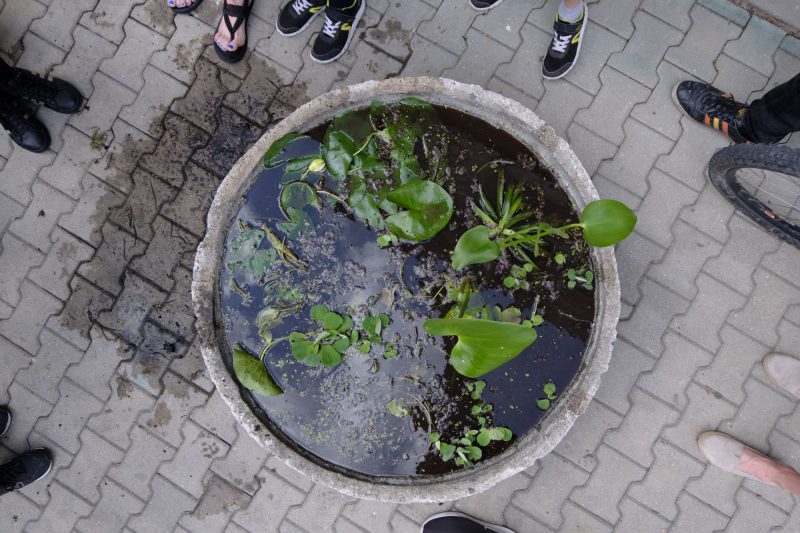
Photo Michał Matejko, 2020
The following plants have been planted in the pot installed in front of the Zachęta building:
Yellow water-lily (Nuphar lutea) is a common plant in Poland, where it grows in ponds and lakes. The characteristic solitary yellow flowers are held above the water surface.
Arrowhead (Sagittaria sagittifolia) has three kinds of leaves: long and narrow ones in the water, similar but rounder ones on the water, and arrowhead-shaped ones above the water. The whorled flowers, white with a dark centre, rise high above the surface.
Fringed water-lily (Nymphoides peltata) is a rare and protected species in Poland, sometimes cultivated in small ponds as an ornamental plant with yellow flowers. The floating leaves are cordate, with a long petiole that widens at the base.
Water caltrop (Trapa natans) is a rare plant in Poland, with numerous ovoid or triangular leaves and a very long stem. The petioles are inflated, providing added buoyancy for the leafy part. Each flower contains a single very large seed. In the past, water-caltrop seeds used to be cooked, baked, dried, and milled into flour. The resettes were also used to make ritual objects or jewellery.
Common duckweed (Lemna minor) has very small leaves and serves as food for many animal species due to its high protein content. It is also a strong bioremediator, used in wastewater treatment.
Spotless watermeal (Wolffia arrhiza) has leaves even smaller than those of common duckweed. It is one of the tiniest flowering plants.
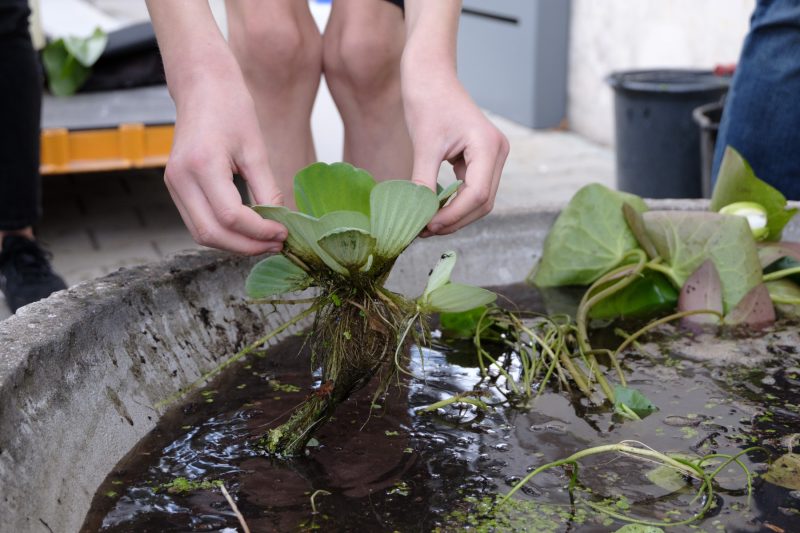
Photo Michał Matejko, 2020
Moreover, the pot features exotic aquatic plants that don’t grow naturally in Poland. Eared watermoss (Salvinia auriculata), native to the Americas, is a floating fern with flat and elliptical surface leaves that grow in pairs and submerged fibrous leaves serving as roots. The freely floating rosettes are of the water cabbage. An expansive species, it has been reported as a nuisance in natural conditions; in small ponds, it acts as a filter and helps to purify water. Tallest of them all, the umbrella papyrus (Cyperus alternifolius) grows in shallow waters, on the shores of rivers and lakes; cultivated in Poland as an ornamental indoor plant.
An inspiration:

Witold Szolginia, Estetyka miasta, Warsaw: Arkady, 1981. Archives of the Institut of Urban Planning and Architecture
The project’s first edition in 2018 in fron Zachęta National Gallery of Art accompanied CENTRALA’s exhibition Amplifying Nature presented in the Polish Pavilion at the Biennale Architettura 2018. The pot was implemented for the secondtime in 2020.
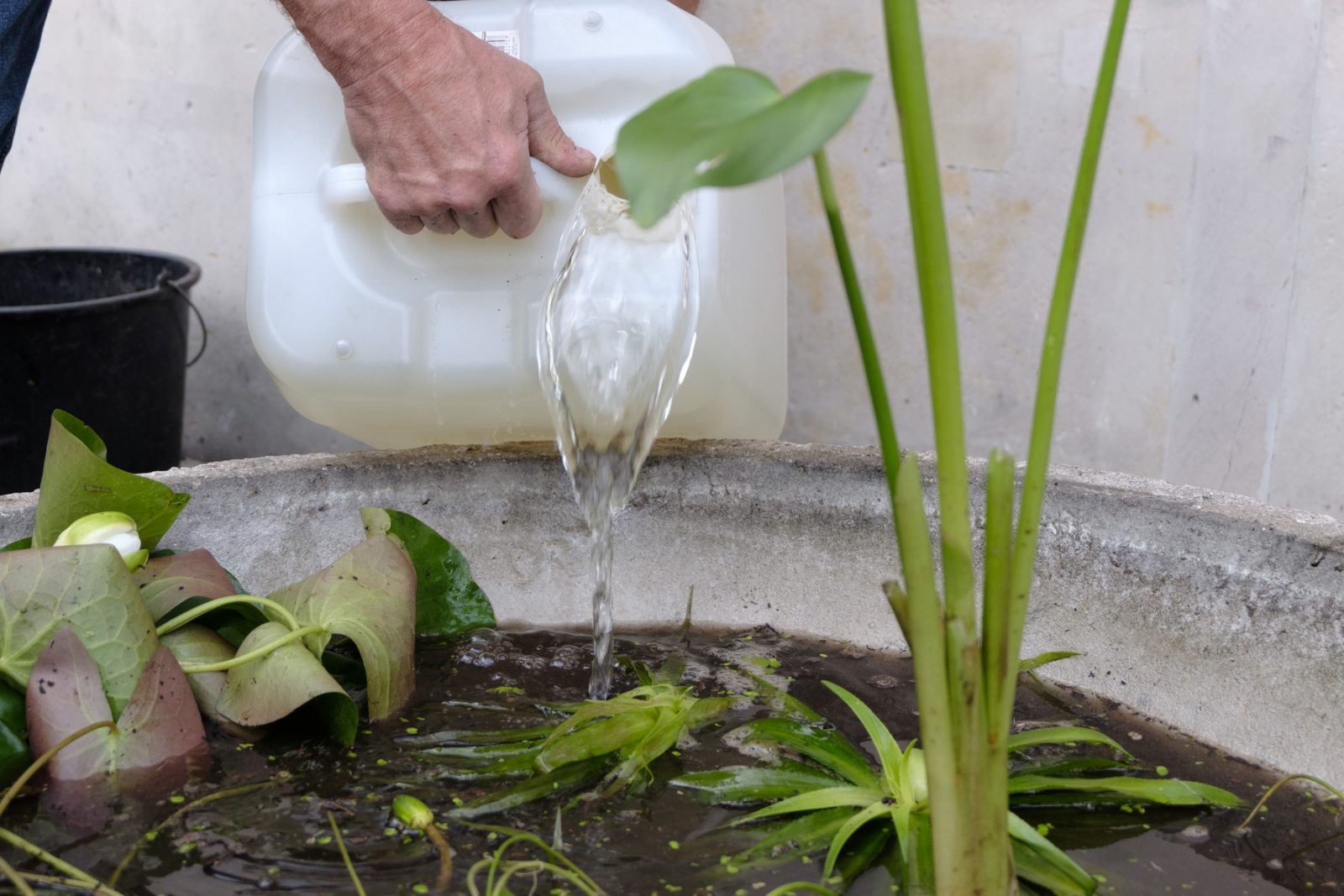
Photo Michał Matejko, 2020
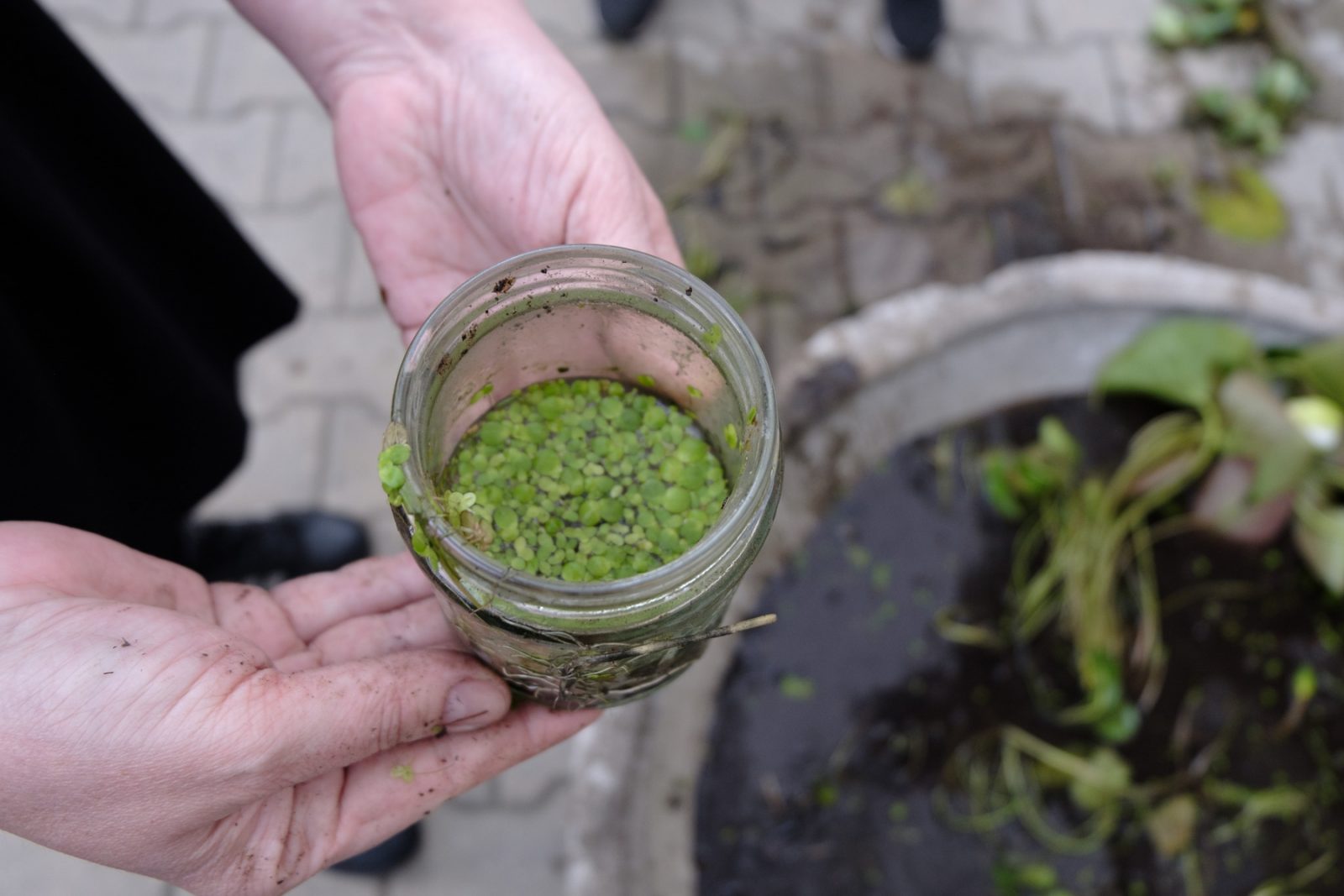
Photo Michał Matejko, 2020
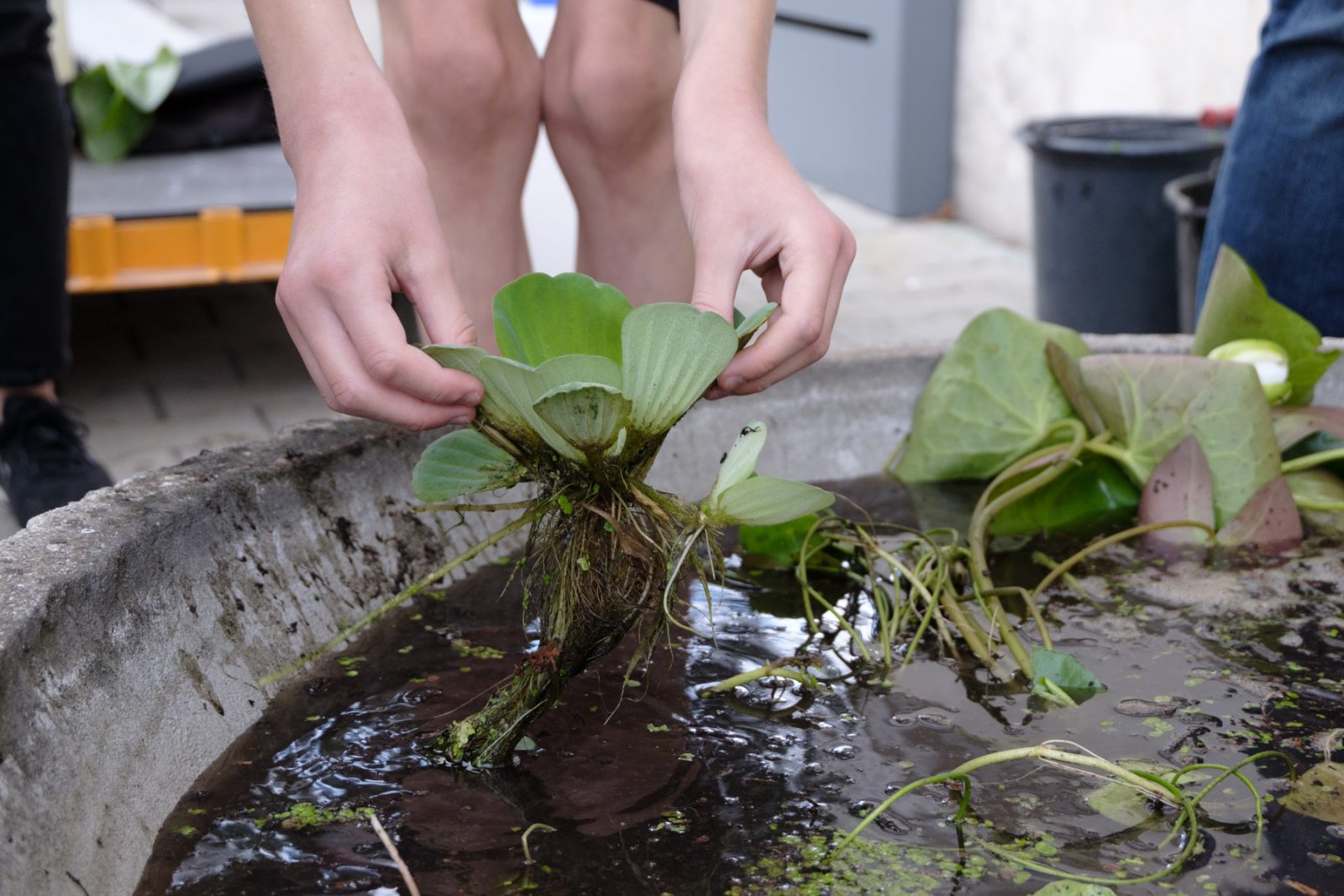
Photo Michał Matejko, 2020

Photo Michał Matejko, 2020

Photo Michał Matejko, 2020

Photo Michał Matejko, 2020
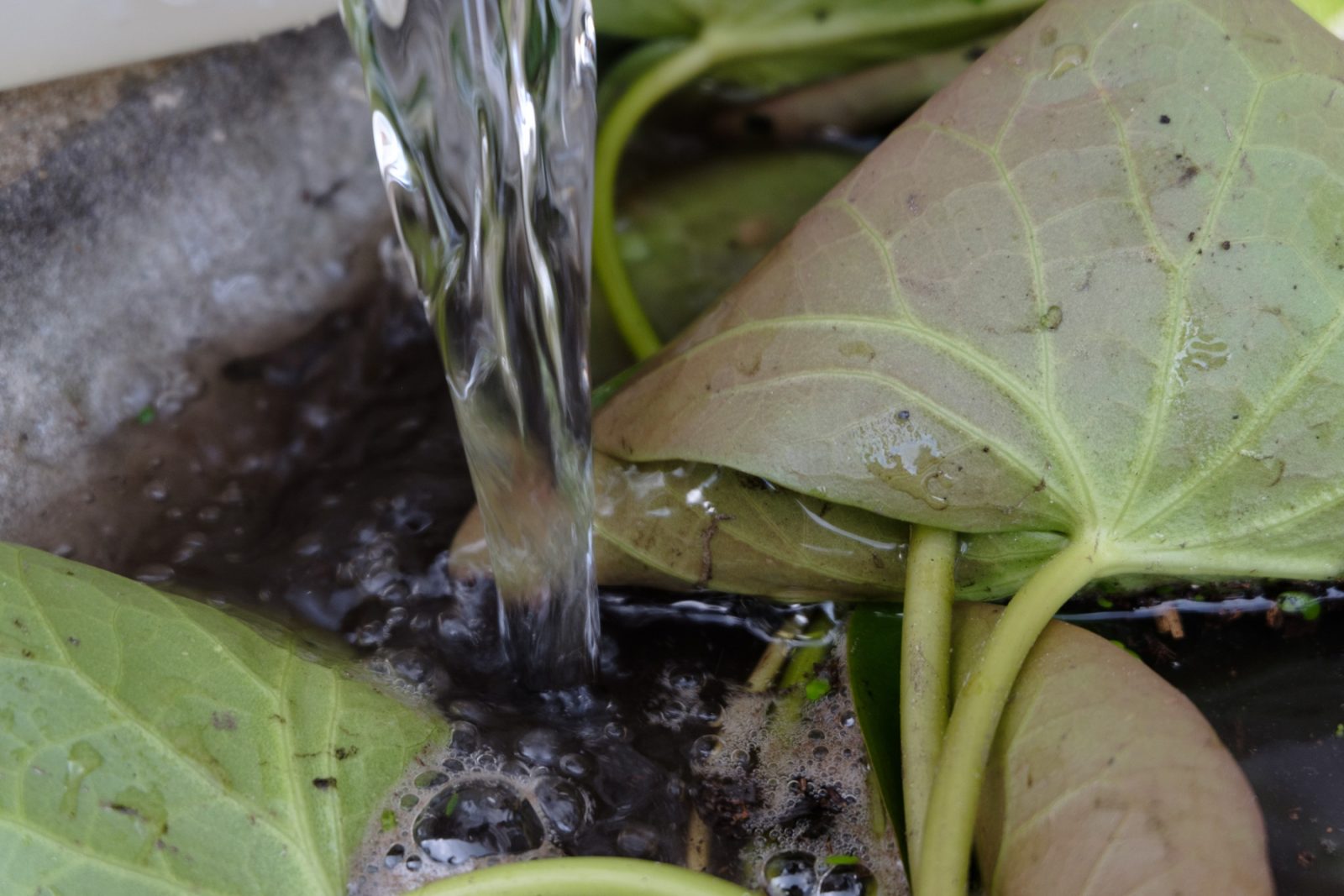
Photo Michał Matejko, 2020
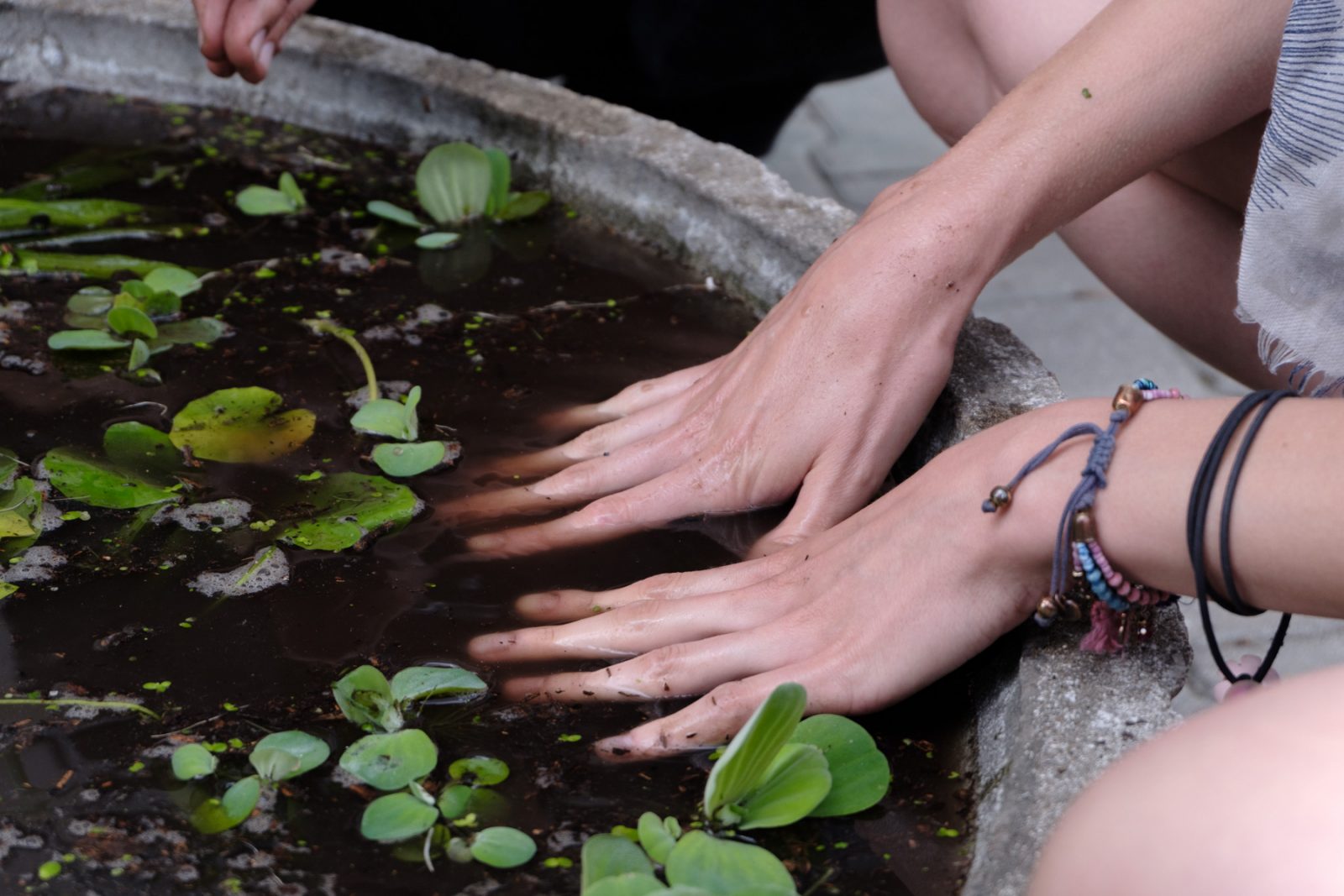
Photo Michał Matejko, 2020
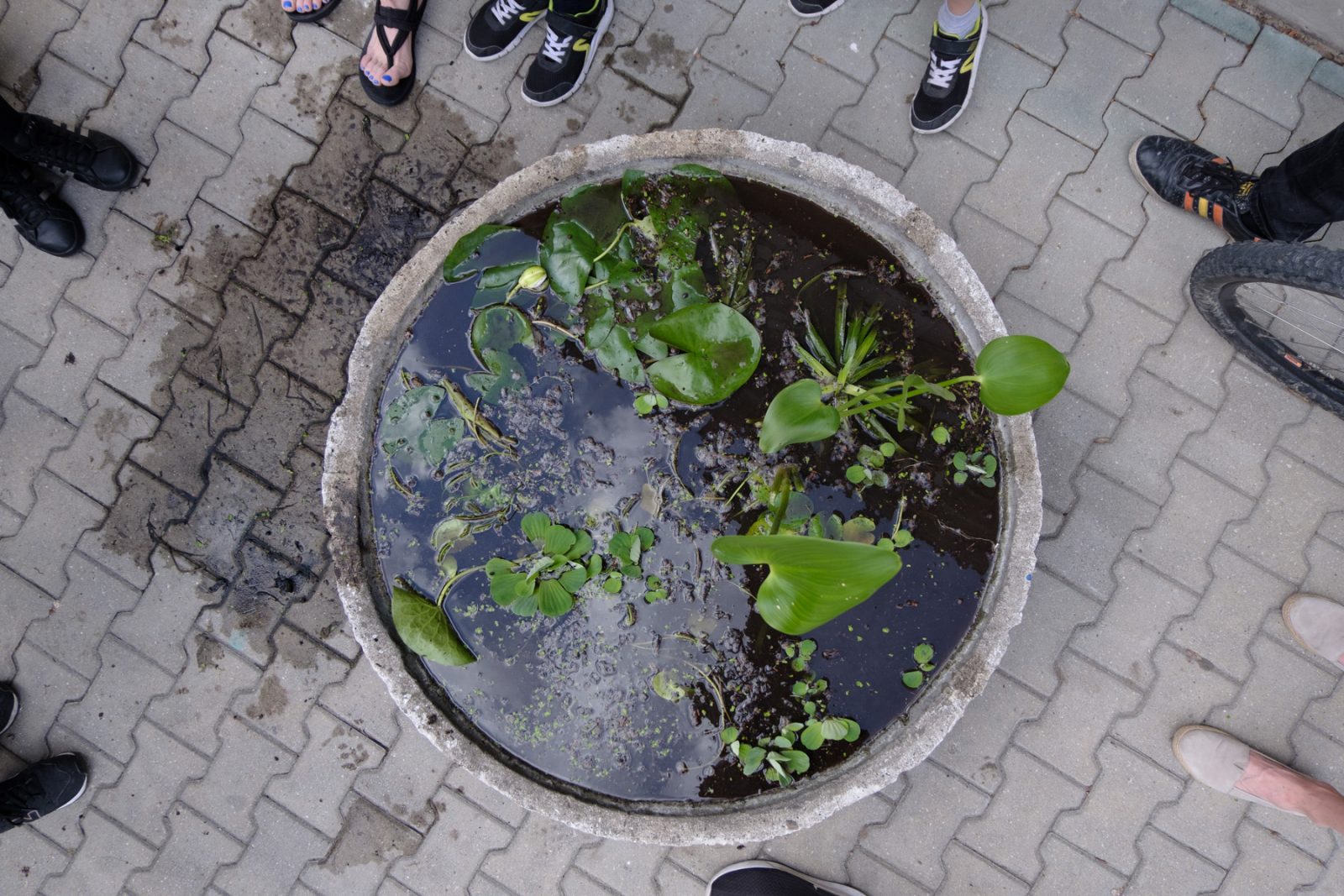
Photo Michał Matejko, 2020
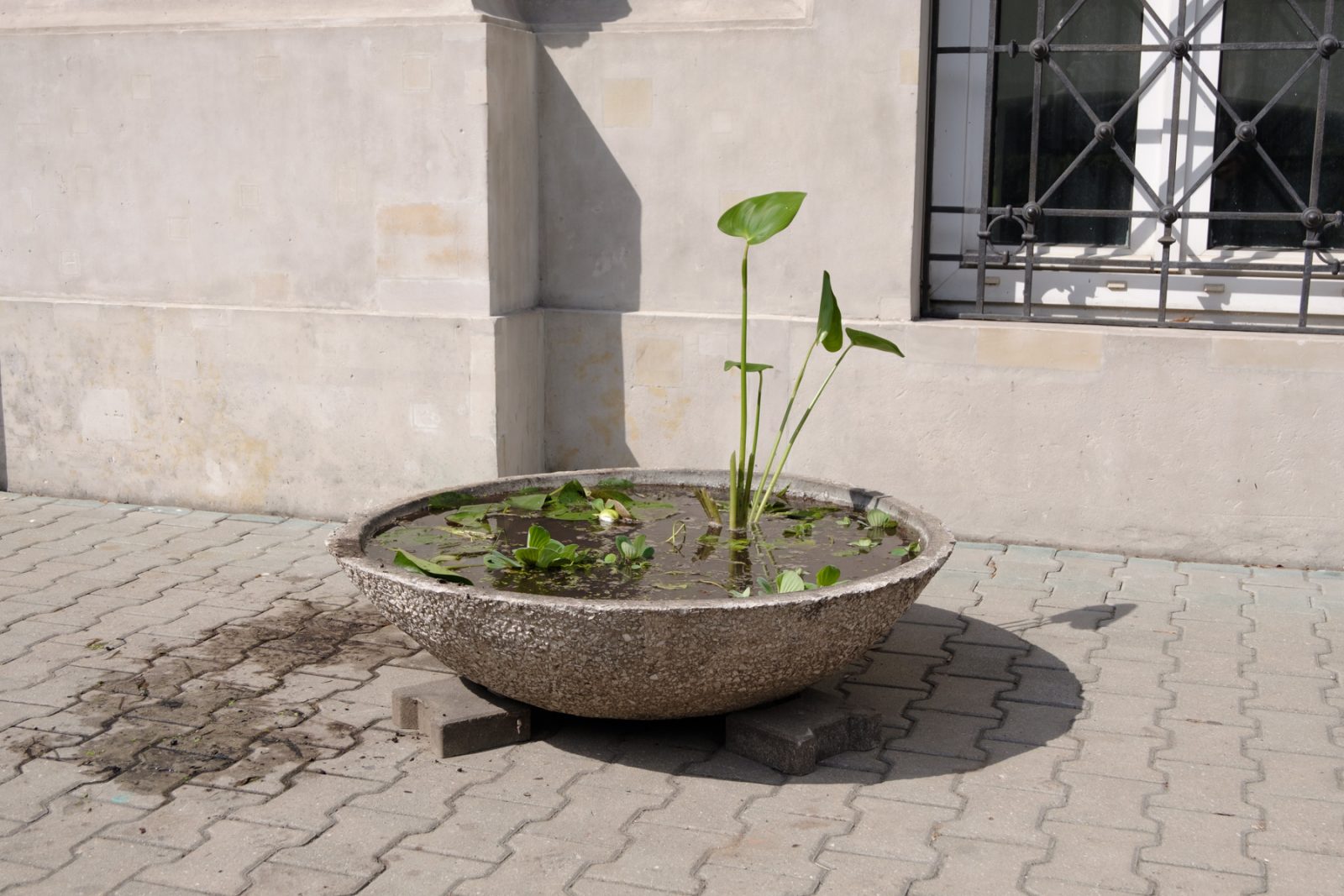
Photo Michał Matejko, 2020
In autumn 2020, in line with the guidelines of Alina Scholtz, pioneer of landscape architecture in Warsaw, we drain water from the pot and covered the plants with a layer of leaves, soil and cortex, preparing the Aquatic Plant Pot for its winter letargo.
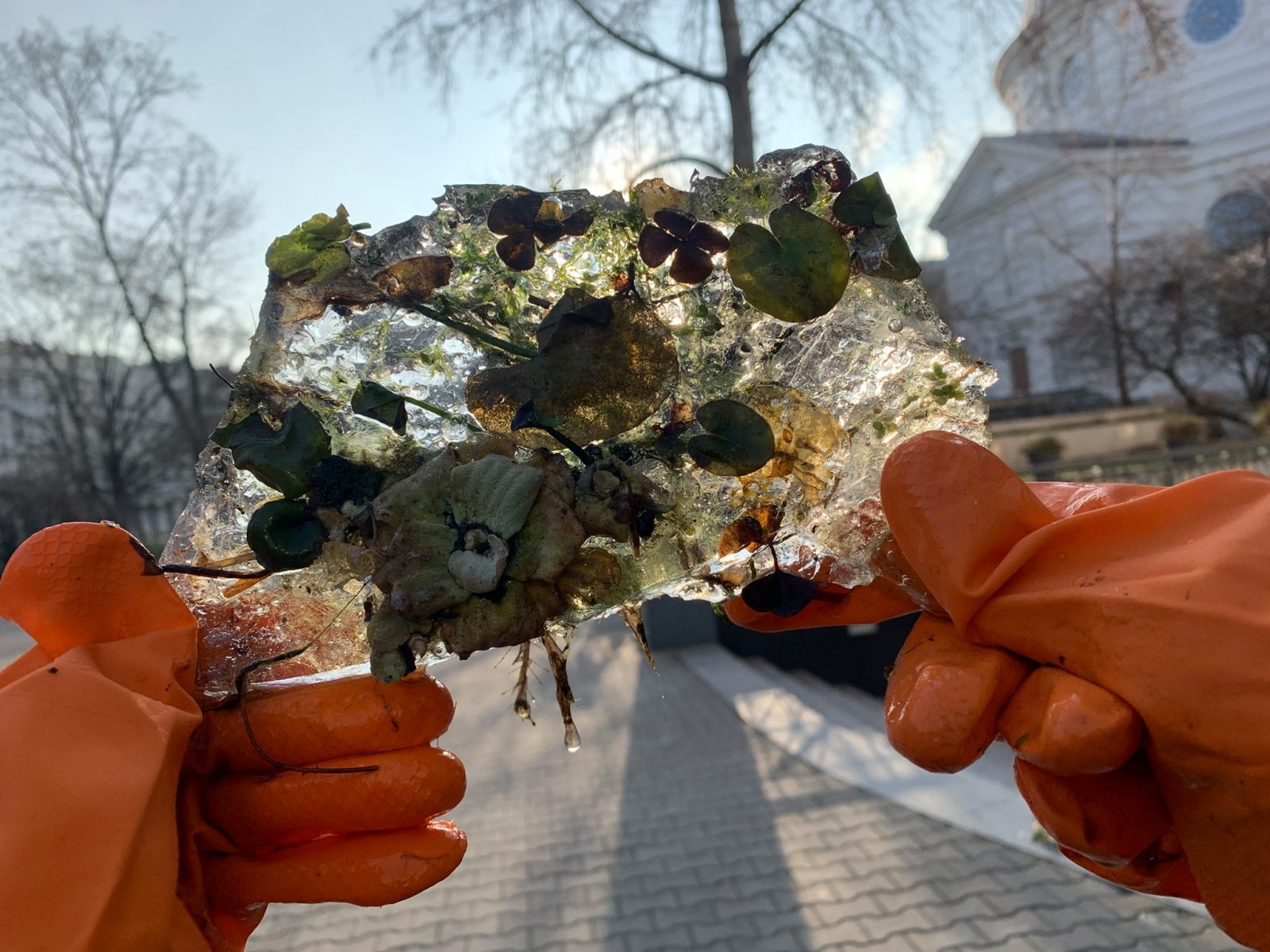
Photo Joanna Waśko, December 2020
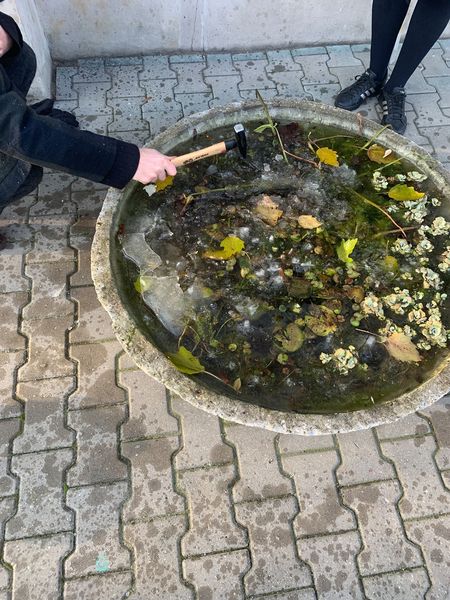
Photo Joanna Waśko, December 2020

Photo Joanna Waśko, December 2020
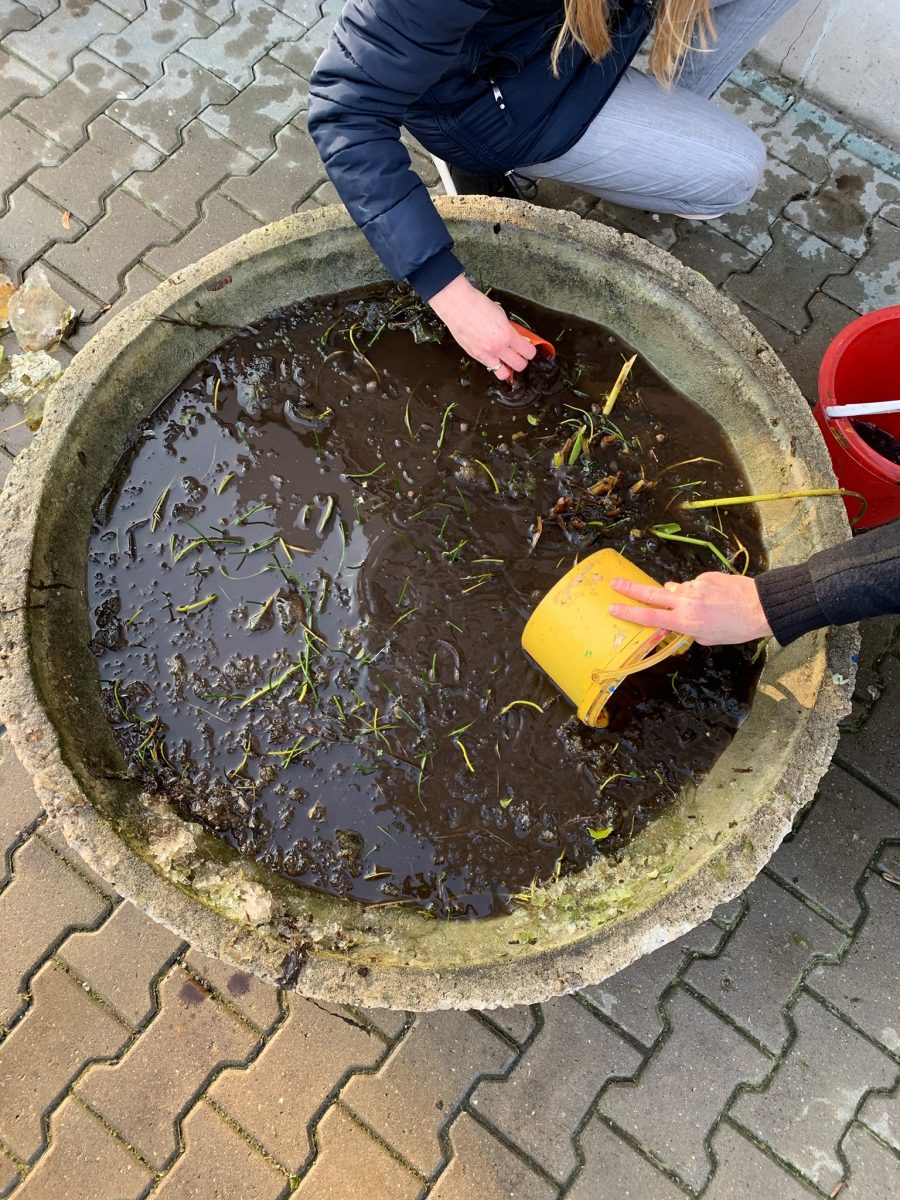
Photo Joanna Waśko, December 2020
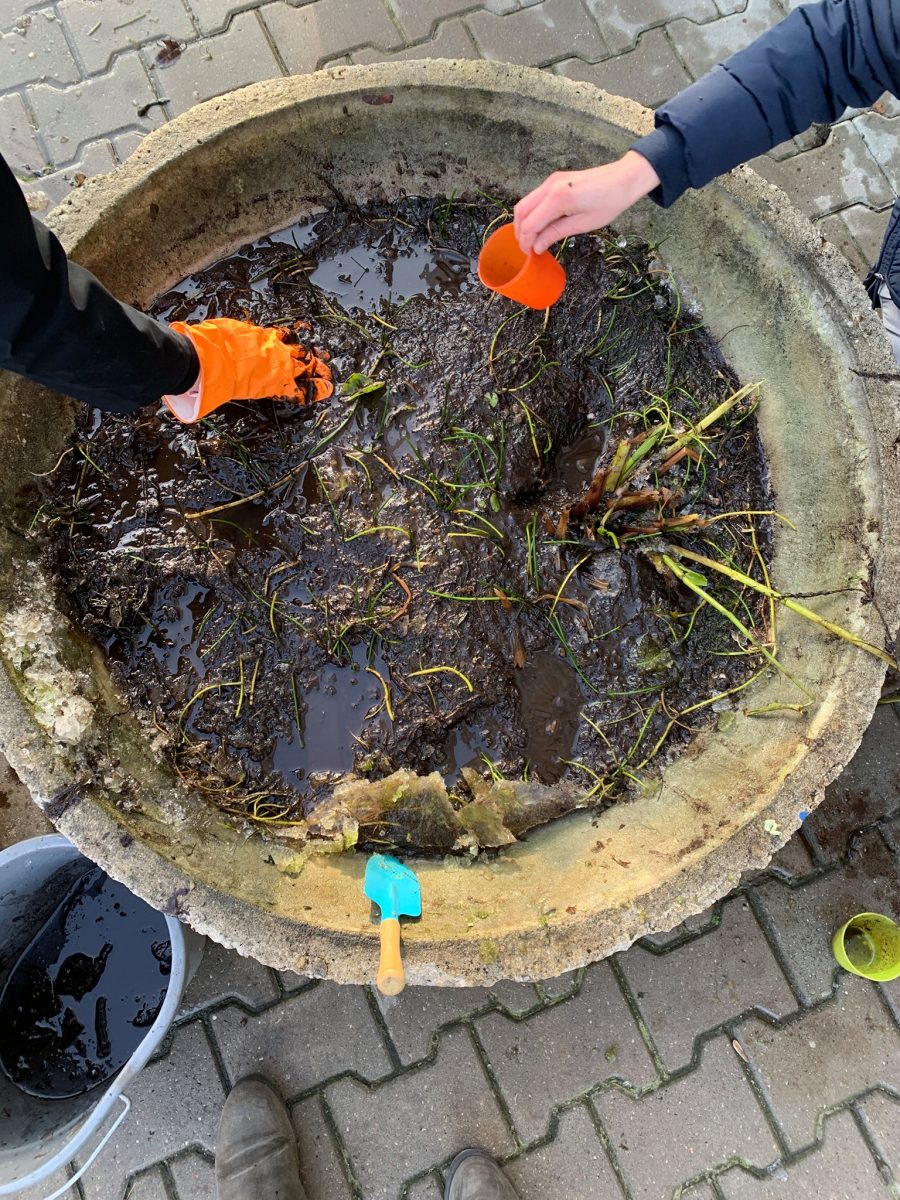
Photo Joanna Waśko, December 2020
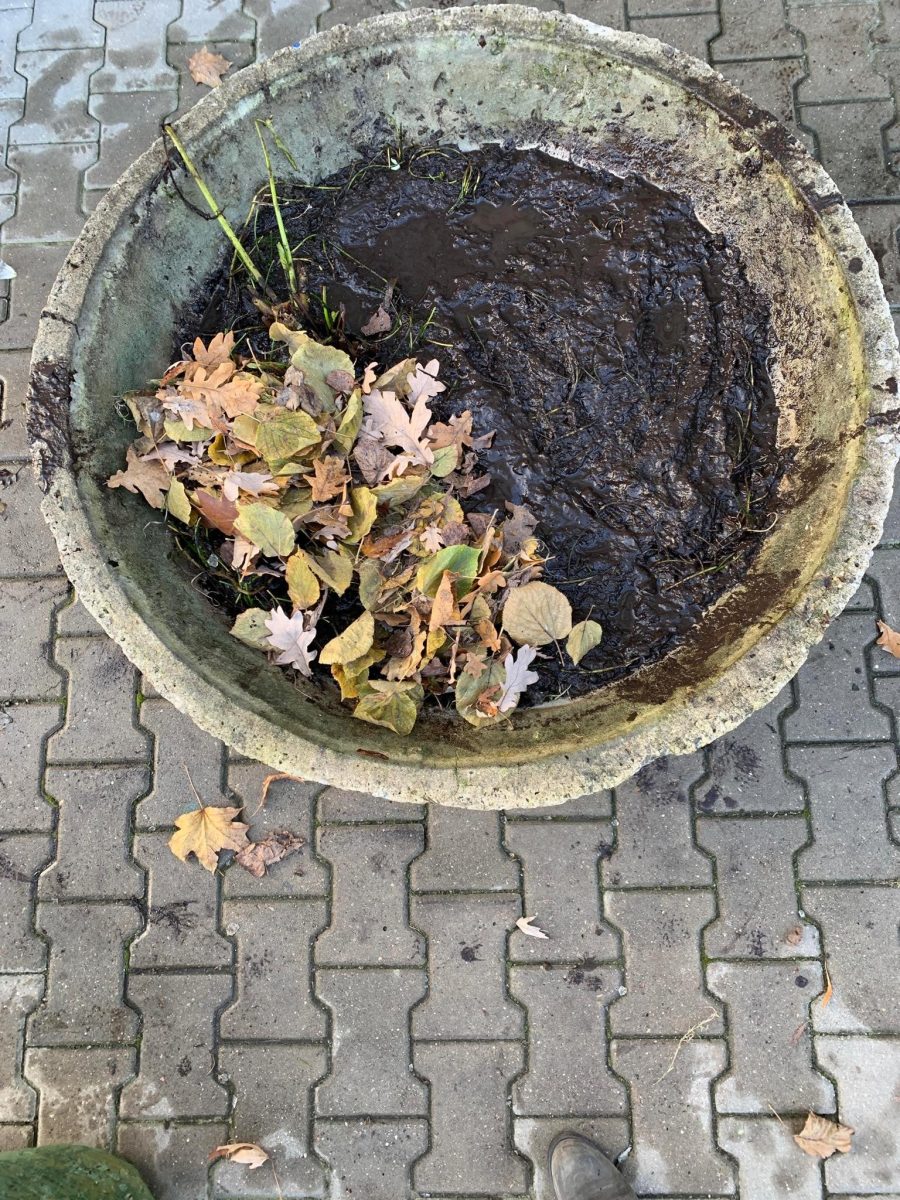
Photo Joanna Waśko, December 2020
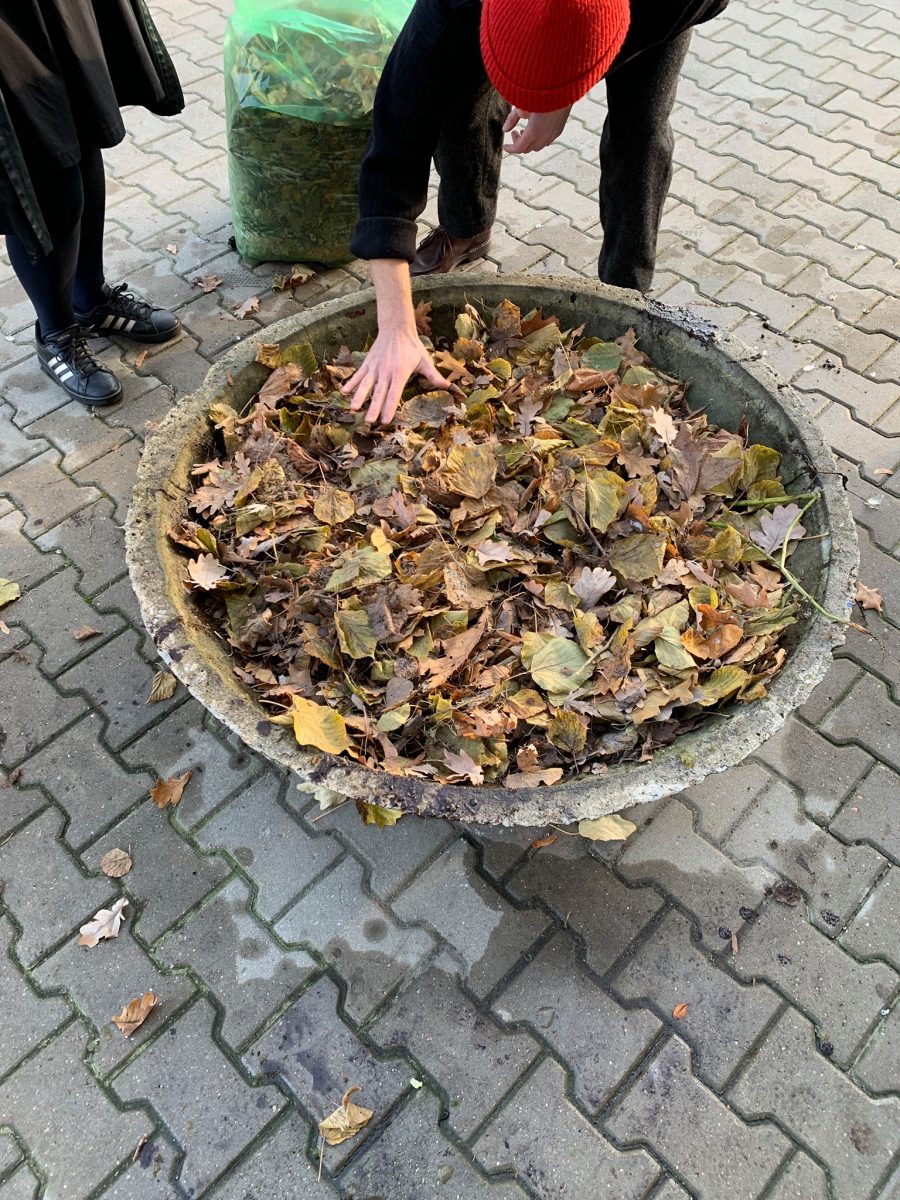
Photo Joanna Waśko, December 2020
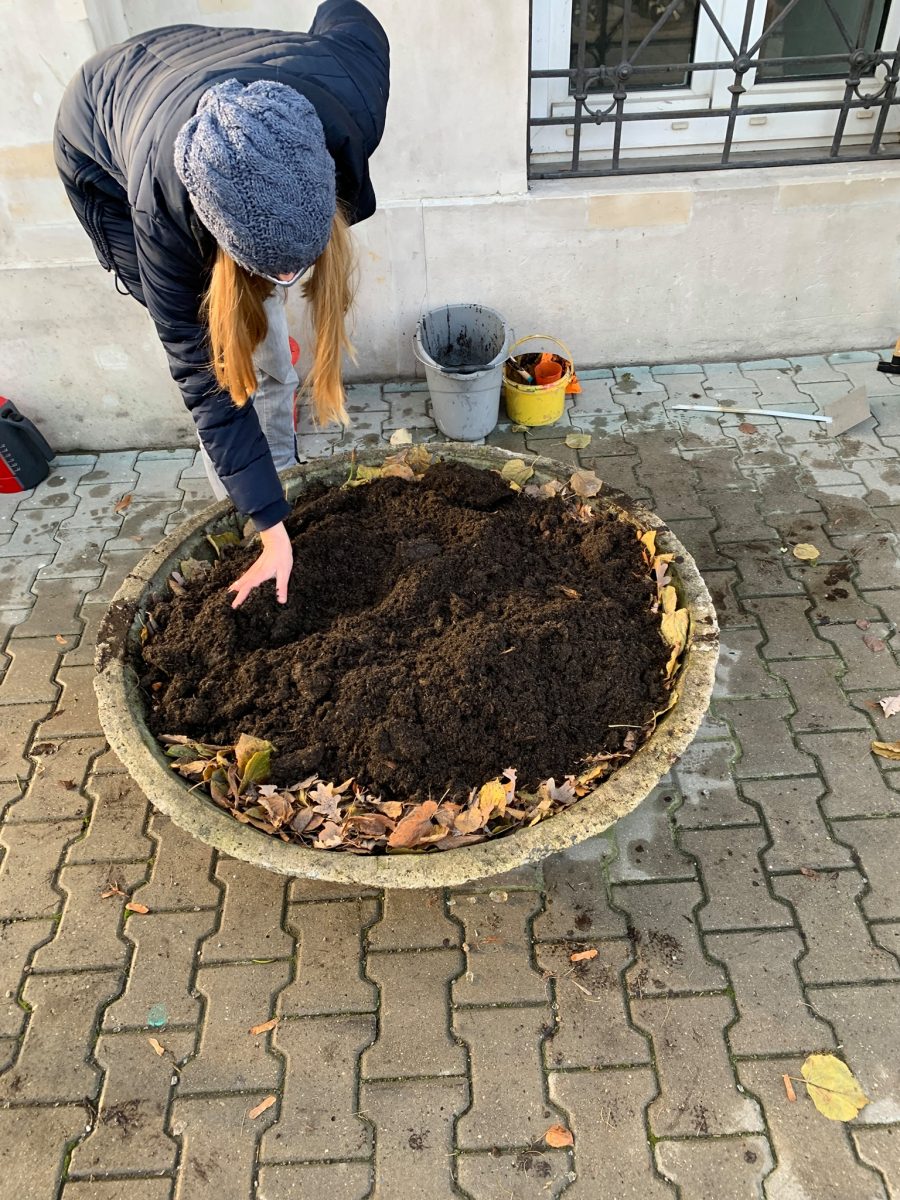
Photo Joanna Waśko, December 2020

Photo Joanna Waśko, December 2020
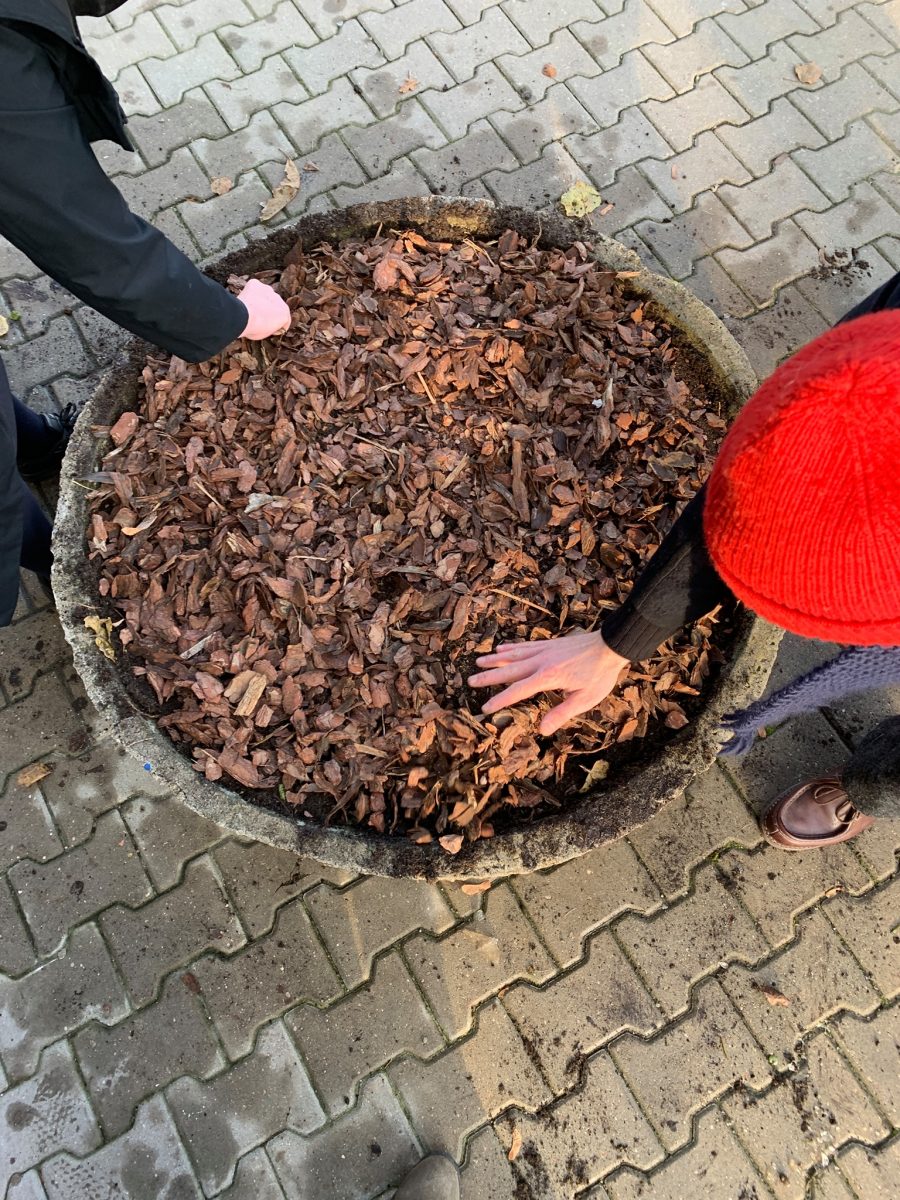
Photo Joanna Waśko, December 2020
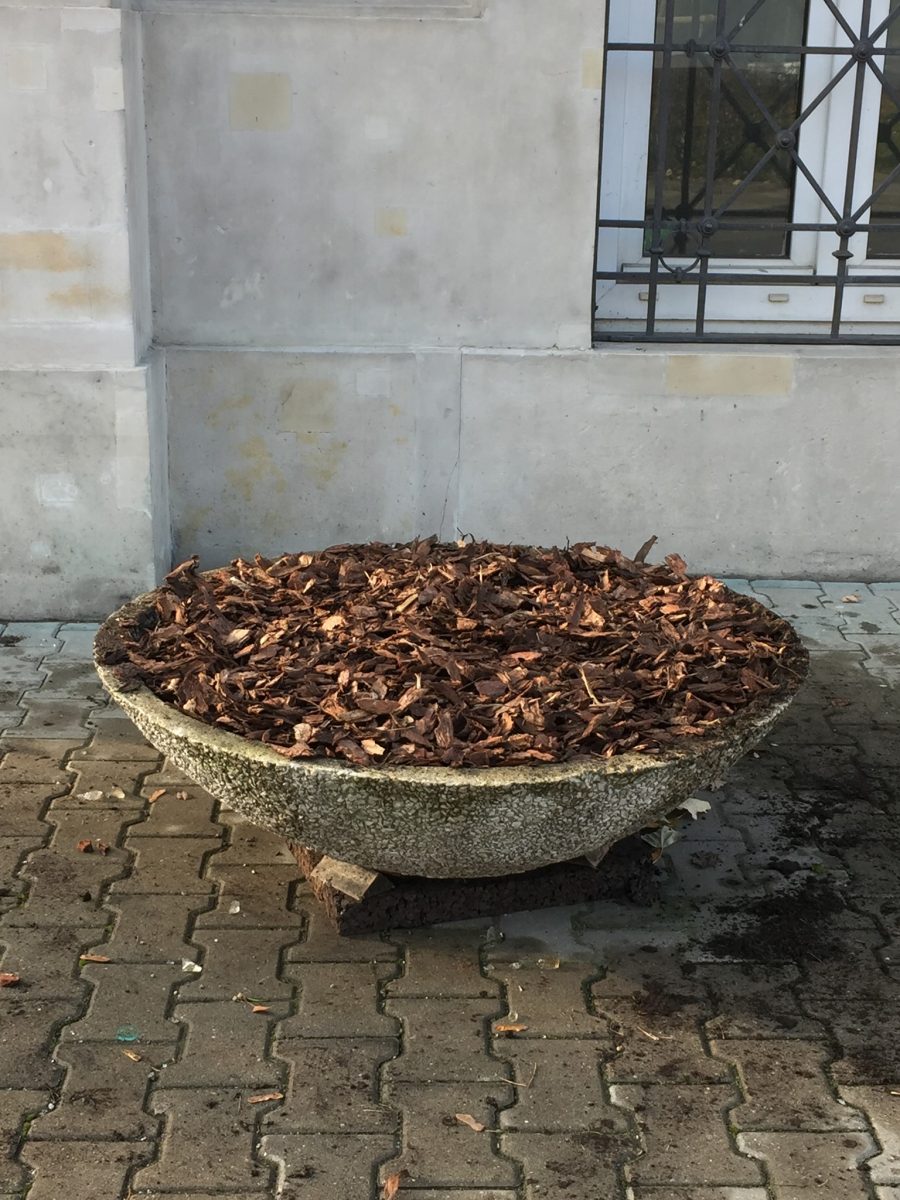
Photo Joanna Waśko, December 2020
In spring of 2021, we removed the layers protecting the plants against the cold and added water. To the plants that survived the winter in the pot and bounced back in spring, we planted those that were overwintering in the greenhouse. This year, 2021, we grow in the pot: fringed water-lily (‘Nymphoides peltata’), (‘Stratiotes aloides’), arrowhead (‘Sagittaria sagittifolia’), common duckweed (‘Lemna minor’), four leaf clover (‘Marsilea quadrifolia’), umbrella papyrus (‘Cyperus alternifolius’) and papyrus sedge ‘Cyperus albostriatus’.
A manual
Aquatic recipe–How to make your own hydrobotanic pot manual was developed as part of the Urban wilding [Miastozdziczenie] initative by Fundacja Puszka [in Polish only].
Pot new city implemetations
June 2022—ongoing, Instytut Dizajnu in Kielce

Aquatic plant pot, Instytut Dizajnu w Kielcach, 2022
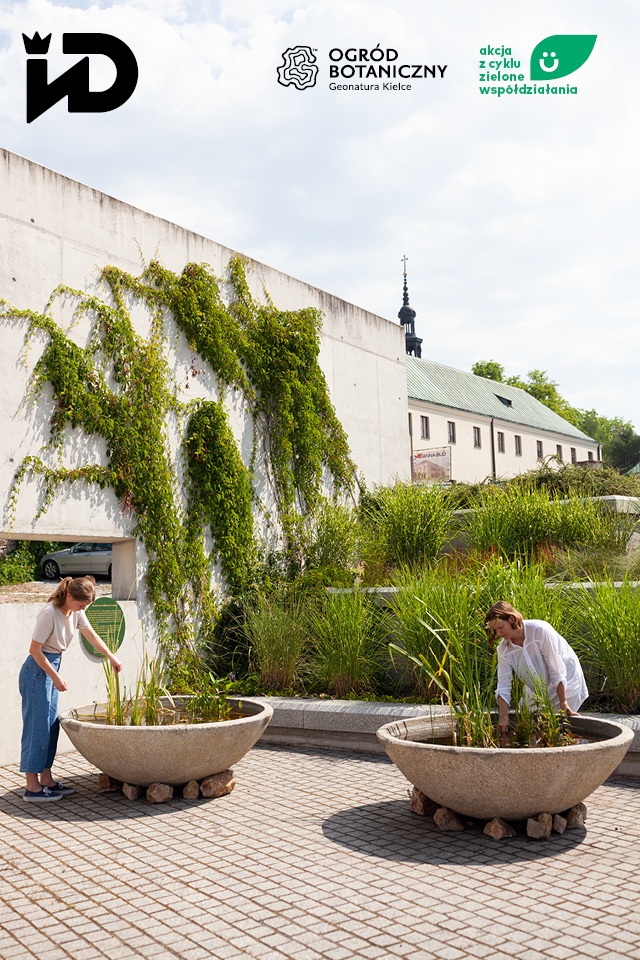
Aquatic plant pot, Instytut Dizajnu w Kielcach, 2022
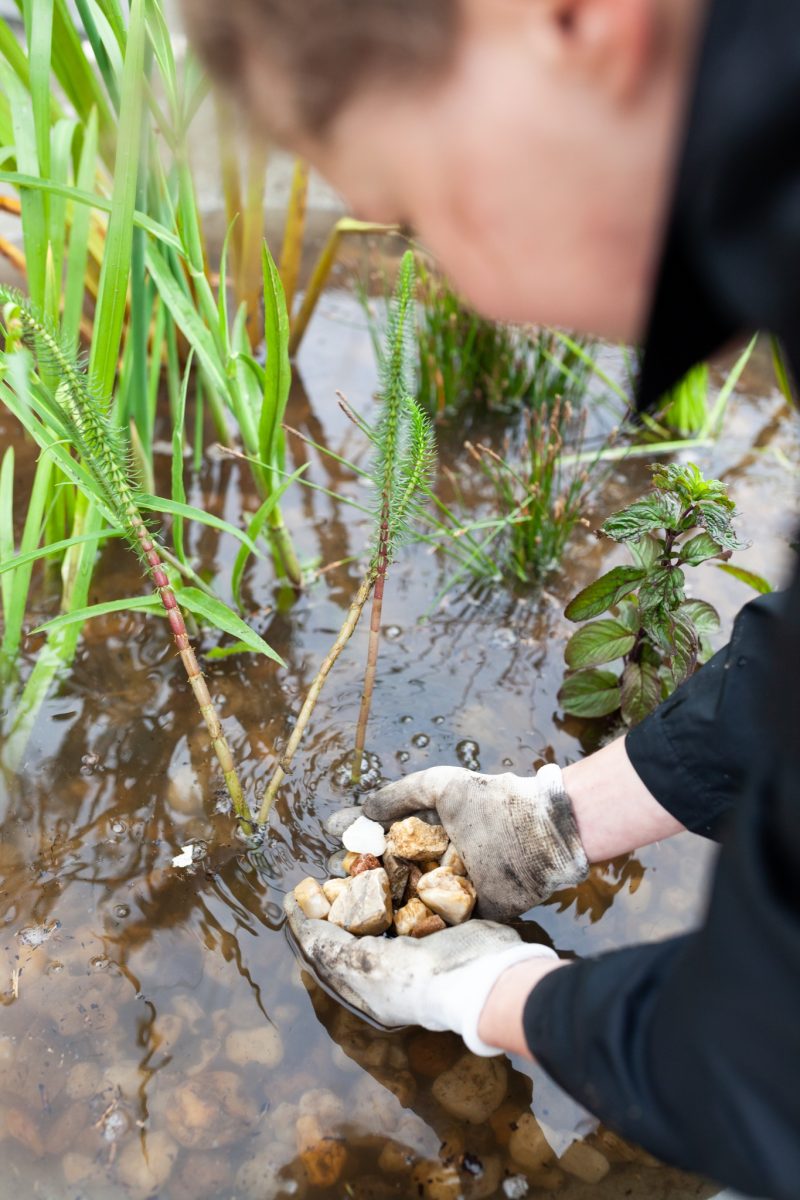
Aquatic plant pot, Instytut Dizajnu w Kielcach, 2022
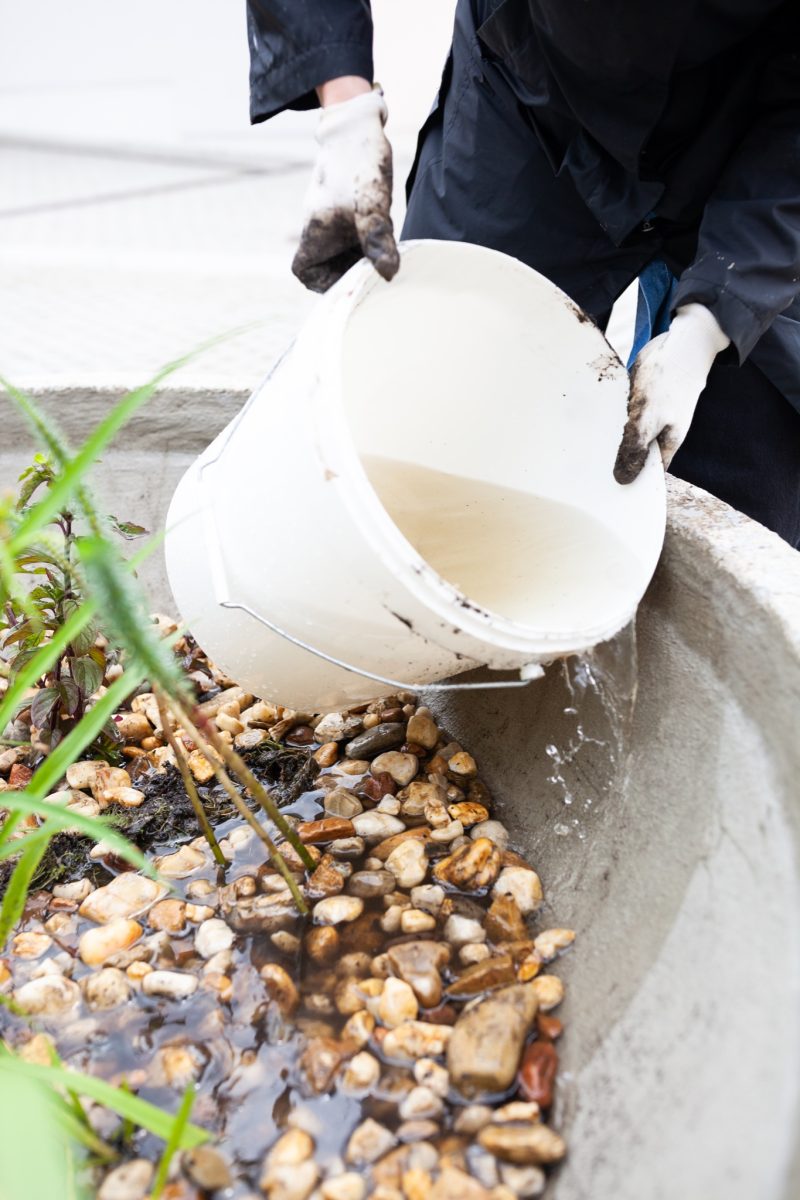
Aquatic plant pot, Instytut Dizajnu w Kielcach, 2022
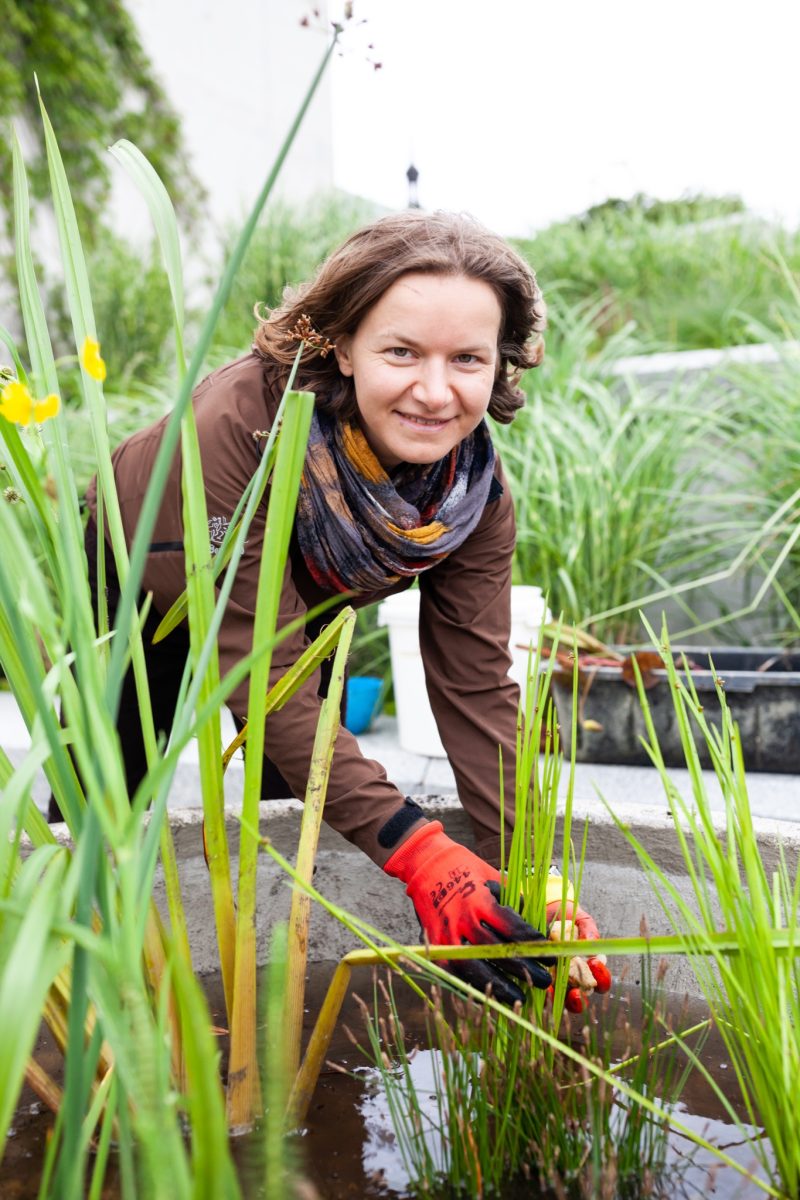
Aquatic plant pot, Instytut Dizajnu w Kielcach, 2022

Aquatic plant pot, Instytut Dizajnu w Kielcach, 2022
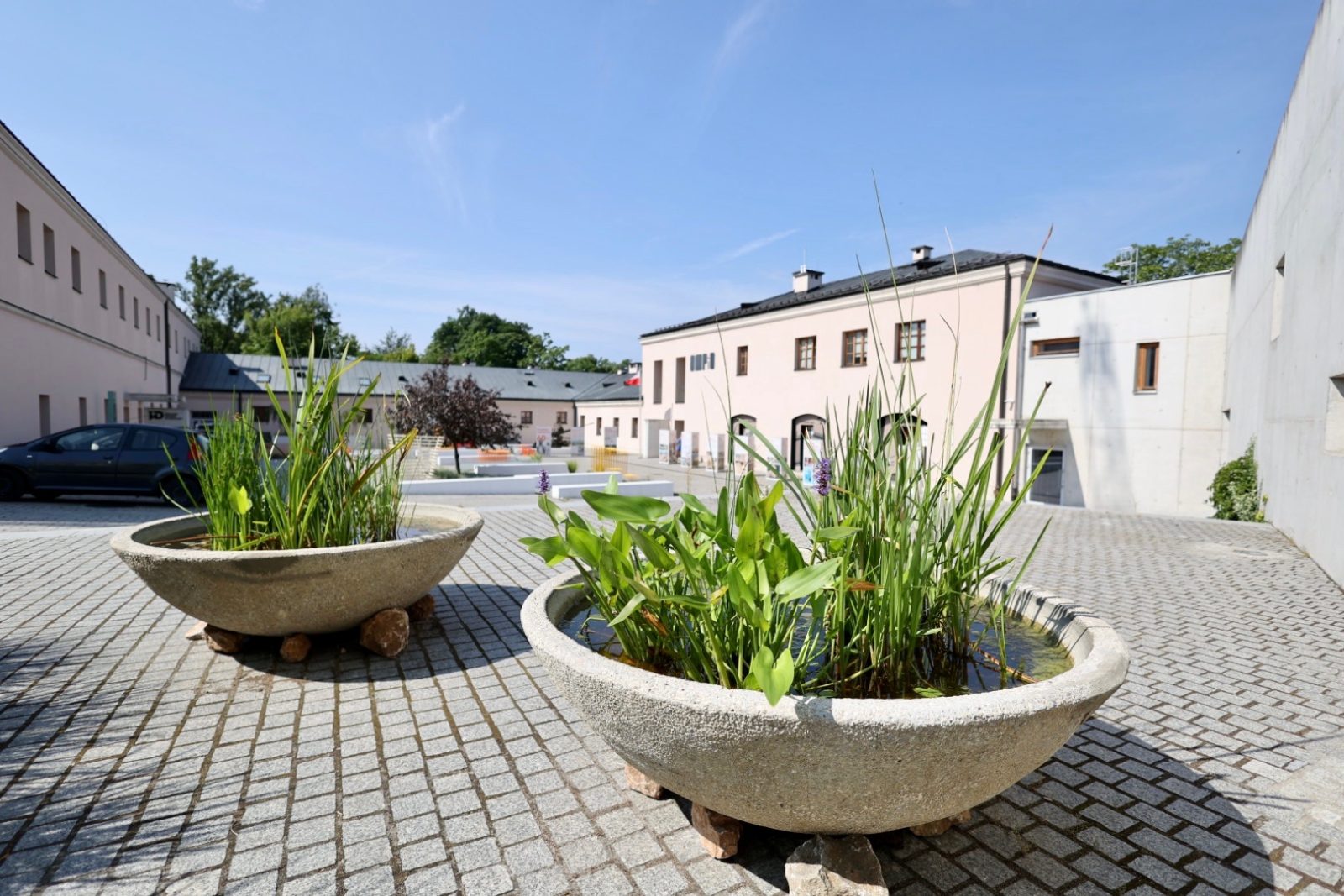
Aquatic plant pot, Instytut Dizajnu w Kielcach, 2022
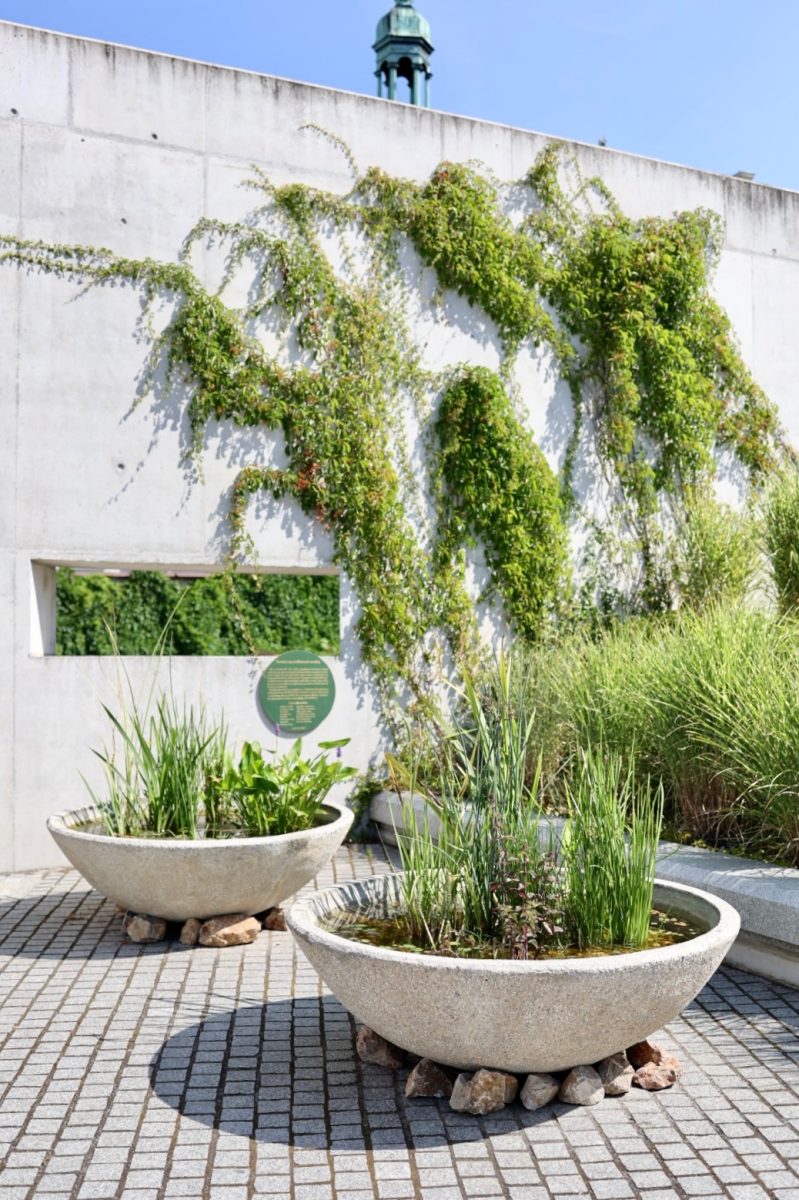
Aquatic plant pot, Instytut Dizajnu w Kielcach, 2022

Aquatic plant pot, Instytut Dizajnu w Kielcach, 2022
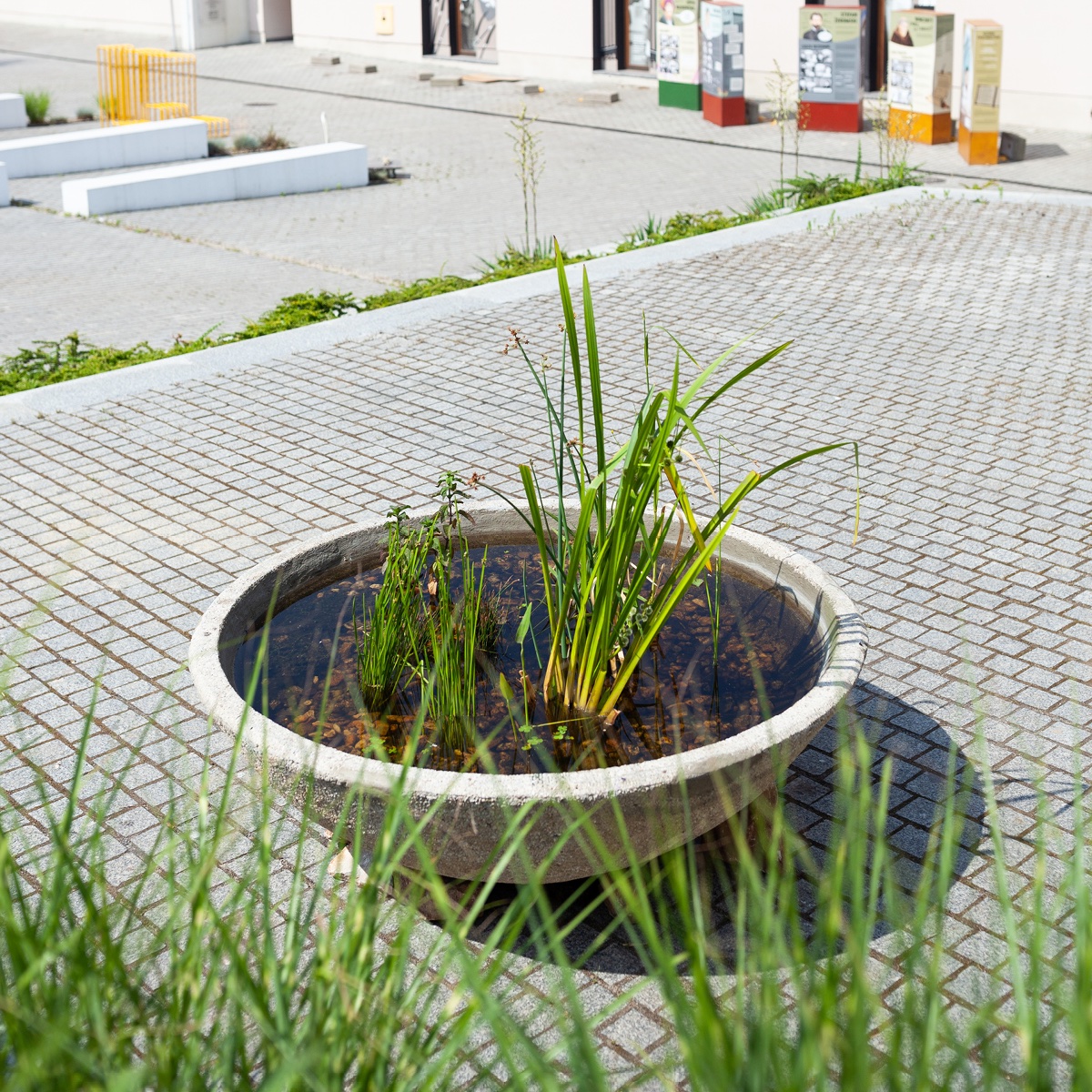
Aquatic plant pot, Instytut Dizajnu w Kielcach, 2022
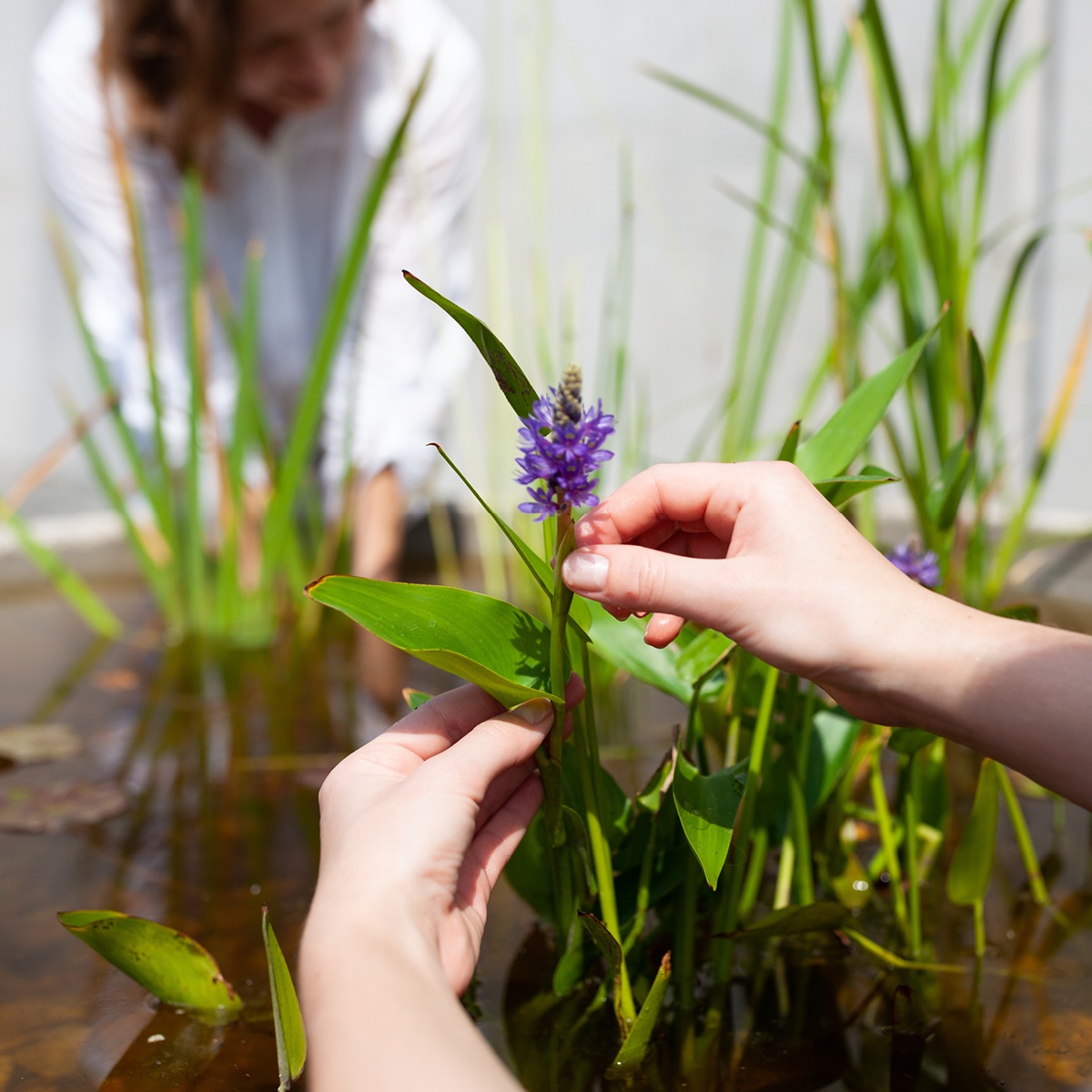
Aquatic plant pot, Instytut Dizajnu w Kielcach, 2022
July 2022—ongoing, Plac Defilad, Warsaw city center
September 2022-ongoing, NOMUS New Art Museum, Gdańsk